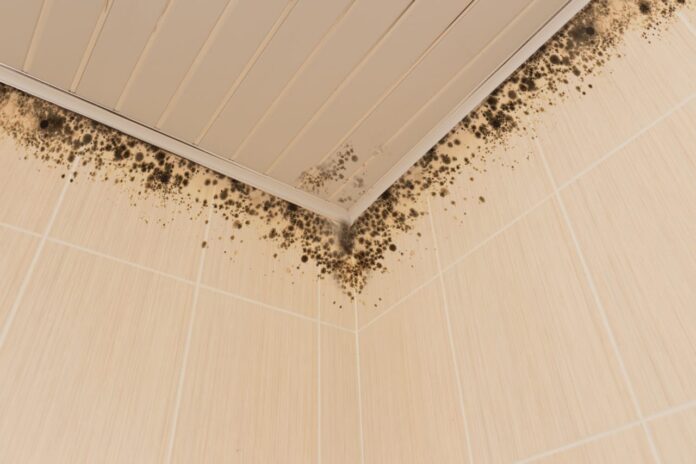In the United States, about 70 percent of homes have mold growth. Not only is this an annoyance for homeowners, but it can also be dangerous for your health. Still, black mold can be out of sight and difficult to see in your house.
By learning more about the signs of black mold exposure, you can recognize these signs in your home and treat the mold growth before it causes any further damage to your home or your health.
Do you want to learn more about the signs of mold exposure? Keep reading these easy tips to spot mold growing in your home.
Pier and beam home foundations are great for keeping water away from the home foundation during storms and flooding; they can retain moisture because they are cool, dark, and damp if unfinished. This can lead to moisture building up and causing mold mildew, and it can also lead to pests and insects under your home. Crawl space encapsulation has many benefits. These include fast, clean installation, removing mold and mildew from the air in your home and more.
Water Exposure
One of the easiest ways to identify mold exposure in your home is if you have a water leak or water exposure in your house. Often, you can see if your walls or carpet are wet in your home.
If there was a leak in your home or if you experienced any type of flooding, you need to dry out your house as quickly as possible. The key to controlling mold is controlling the moisture in your home.
By drying out the water exposed areas in your home, you can prevent mold before it even starts growing. If you noticed the water damage too late, you will likely have to replace your carpet or ceiling tiles where the water leaks were located.
If you have water damage in basement, you can hire a professional waterproofing company to prevent this from being an issue in the future.
Lung Irritation
Next, you might have mold growing in your home if you regularly have lung irritations or difficulty breathing. Mold-related infections can make it hard to breathe normally.
Some signs of lung irritation include a sore throat, coughing, and more.
This is because mold releases tiny spores that float in the air and enter your home through openings, like windows and doors. Because these spores are in the air, they can be breathed in and cause problems with your nasal passages, even if you aren’t allergic to mold.
Not only can this lead to irritation of your nose, throat, and lungs, but the spores can lodge themselves into your mucus membranes and eventually cause burning and bleeding.
With these passages irritated, it can also lead to coughing, sneezing, and more.
Instead of installing real marble floors, you can turn your existing concrete into a beautiful new surface. Marble epoxy flooring is made of synthetic polymer and is one of the fastest-growing decorative coatings in the industry. The layer of marble epoxy flooring is both mold-resistant and waterproof. So to prevent mold, epoxy flooring is the best option.
Musty Smell
One of the first signs that there is black mold growing in your home is if you walk inside and notice a musty smell. When mold grows, it smells earthy and damp, because those are the conditions in which mold grows.
One of the reasons why mold smells bad is because it emits gas as it grows and spreads. This gas is known as microbial volatile organic compounds and comes at different stages of mold growth.
Because of these microbial volatile organic compounds, also known as mVOCs, many people experience headaches, dizziness, fatigue, and even nausea.
Warped or Cracked Walls
Another way that you can identify mold growth in your house is if you see warped or cracked walls, paint, and more. This is often because the water damage that causes mold causes these issues with your house as well.
If you notice that there are cracks in your walls, you may want to see if you can smell a musty odor coming from the same area.
Even if you don’t notice any other signs of mold growth, it is important that you get areas with water damage tested for mold growth.
Typically Wall cracks are a common sign of foundation failure, but they don’t necessarily mean there’s structural damage. Due to foundation movement, wall cracks can appear on both interior and exterior walls. On the other hand, hairline cracks usually aren’t severe.
Headaches
Next, mold commonly causes headaches when you have continued exposure. As you breathe in the spores that spread from the mold growth, they irritate your respiratory system and can harm your sinuses.
With this increased pressure in your sinuses, it can lead to super painful headaches and changes to the barometric pressure in your head.
If you have serious headaches that do not go away over time, you should get your home tested for mold.
Skin Rashes
Mold spores can also cause serious skin rashes and itchiness in people who are allergic to mold. When you breathe in the spores, your immune system can overreact and trigger an allergic reaction.
Often, this can lead to inflammation and skin rashes. You can also get these rashes from touching mold.
Typically, skin rashes from mold look like dry, scaly skin patches, pink or red bumps, and other discoloration.
Discoloration
Finally, you may notice visible signs of mold growth that make it easy to recognize. While some types of mold go unseen for months or even years, others can grow on the surfaces of your home.
Different types of mold have different colors and textures, including black, green, white, brown, and gray. If you notice discoloration on your walls, this may be due to mold growth.
While it may just look like a dirty patch on your wall, areas with mold growth will expand and change over time.
Learn More About the Signs of Black Mold Exposure
While mold isn’t always an immediate concern for homeowners, living with mold for too long can cause serious health issues. The more you are exposed to the mold in your home, the more severely your body will react to it.
By recognizing these signs of black mold exposure, you can get it addressed as quickly as possible.
To learn more about the signs of black mold and other dangerous growths in your home, we can help! Check out the articles on our site to learn about home improvements, lifestyle, and more.










